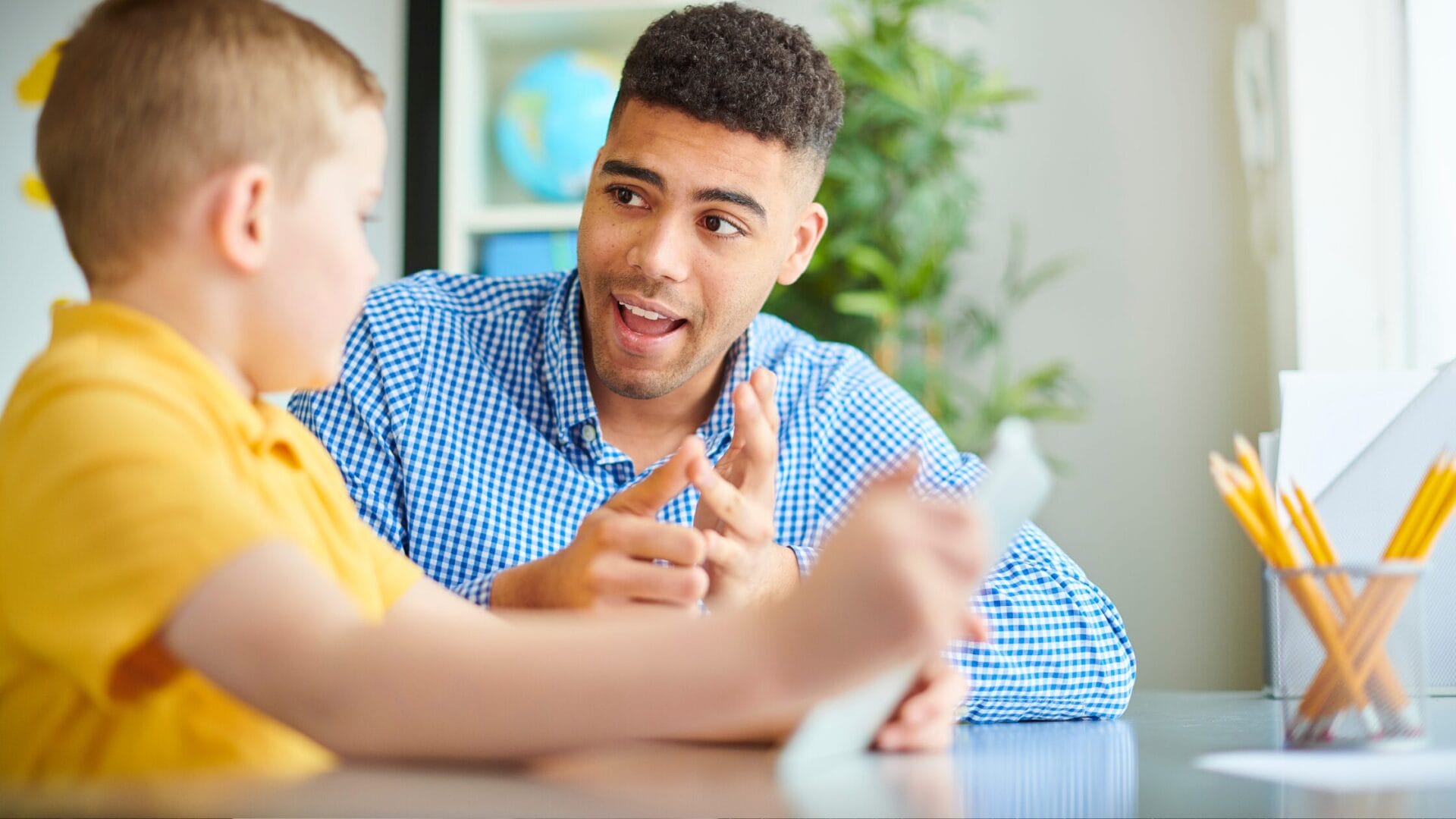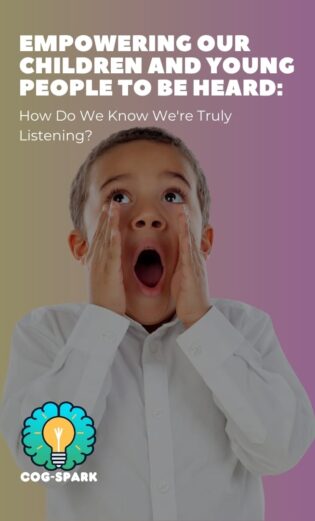In a recent conversation with a young person, they expressed a sentiment that made me pause. “I don’t feel like my voice is truly being listened to,” they said. Despite their best efforts to support others, they felt that their voice wasn’t recognised or valued. This is a powerful reminder that, as adults, we often ‘think’ we are listening to our children and young people—but are we really?
Too often, we engage with children through the lens of adulthood. We were once children ourselves, but that time is long behind us. The world has changed, and so have the pressures young people face. Yet, we might unintentionally dismiss their experiences because they don’t seem as overwhelming as our own. But here's the truth: their experiences are ‘their’ reality, and for them, the stakes are just as high as ours were back then.
The voices of children and young people are often overlooked in decision-making processes, whether in families, schools, healthcare, or wider society. Yet, empowering them to be heard is crucial for their development, self-esteem, and overall well-being. Listening to young people is not just about hearing their words but about actively engaging, valuing, and responding in ways that make them feel seen, respected, and empowered.
However, how do we know we are truly listening? Many adults believe they listen to young people, but without self-reflection and intentional effort, listening can become a passive act rather than an active, meaningful process. This article explores why listening matters, the barriers that prevent us from truly hearing young people, and practical strategies to develop a culture of genuine listening in various settings.
Why Listening to Children and Young People Matters
Building Self-Worth and Confidence
When children and young people feel listened to, they develop a stronger sense of self-worth. Being heard reinforces the idea that their thoughts and feelings are important, helping them to build confidence in expressing themselves.
Strengthening Emotional Well-being
Feeling unheard can lead to frustration, loneliness, and even mental health struggles such as anxiety and depression. Listening helps young people feel valued and understood, which contributes to positive mental health.
Encouraging Autonomy and Decision-Making Skills
When young people are given a voice in decisions that affect them, they learn to think critically, weigh options, and develop independence. Whether in a classroom, home, or community setting, enabling them to participate in decision-making fosters autonomy.
Enhancing Relationships and Trust
Trust is built when children and young people feel that the adults in their lives genuinely listen and respond with respect. This trust lays the foundation for open communication, making it easier for young people to seek guidance and support when needed.
Creating a More Inclusive Society
Ensuring young people’s voices are heard is essential for an inclusive society. Whether it’s in education, healthcare, or policy-making, their perspectives bring fresh insights that can lead to better solutions and more equitable outcomes.
The Barriers to Truly Listening
Despite good intentions, there are several barriers that prevent adults from truly listening to children and young people. Recognising these obstacles is the first step toward overcoming them.
Power Imbalance
Adults often hold authority over young people, leading to a dynamic where the adult’s voice is seen as more important. This imbalance can discourage young people from speaking up or make them feel their opinions are dismissed.
Lack of Time and Patience
Busy schedules, work pressures, and other responsibilities can lead adults to listen superficially rather than engage fully. When children sense that they are being rushed or dismissed, they may stop trying to communicate.
Preconceived Notions and Bias
Adults sometimes assume they know what’s best for young people without truly understanding their experiences. This bias can lead to decisions that do not reflect the actual needs or desires of the young person.
Fear of Discomfort or Conflict
Some topics—such as mental health, identity, or social issues—can be uncomfortable to discuss. Adults may avoid deep conversations out of fear of saying the wrong thing or not knowing how to respond.
Listening to Respond, Not to Understand
Many people listen with the intent of replying rather than truly understanding. This can result in advice-giving, dismissing emotions, or steering the conversation toward the adult’s own perspective rather than focusing on what the young person is actually saying.
Practical Strategies for Truly Listening
To ensure that children and young people feel genuinely heard, we must adopt intentional, inclusive, and empathetic listening strategies. Below are key approaches that can be applied in various settings, including homes, schools, community groups, and healthcare environments.
Active Listening: More Than Just Hearing
Active listening involves giving full attention, validating emotions, and responding thoughtfully. Key aspects include:
- Making eye contact and using open body language to signal attentiveness.
- Eliminating distractions (e.g., putting down the phone, turning off the TV).
- Using verbal and non-verbal affirmations ("I hear you," nodding, maintaining a relaxed posture).
- Asking open-ended questions that encourage deeper expression rather than simple yes/no answers.
Example: Instead of saying, “How are things?” (which usually gets a one-word response), ask, “What was the most exciting thing about this lesson?”
Creating Safe Spaces for Open Communication
Young people need environments where they feel safe to express themselves without fear of judgment or dismissal. To foster this:
- Encourage regular check-ins to discuss feelings, thoughts, and concerns.
- Normalise discussions around emotions by sharing your own experiences in an age-appropriate way.
- Be mindful of tone and reaction—if young people fear an angry or dismissive response, they may withhold their true feelings.
Example: A classroom can have a “listening corner” or a "zen den" where students can write concerns anonymously if they’re uncomfortable speaking aloud.
Practicing Reflective Listening
Reflective listening involves paraphrasing what the young person has said to ensure understanding and showing empathy.
- Listen carefully without interrupting.
- Summarise what you heard: “It sounds like you’re feeling frustrated because…”
- Ask for clarification: “Did I get that right?”
- Validate their emotions: “I can see why that would be upsetting.”
This strategy reassures young people that their feelings are recognised and respected.
Empowering Young People to Express Themselves in Their Own Way
Not all young people feel comfortable expressing themselves through direct conversation. Providing different mediums of expression can help:
- Art and creative writing for those who prefer visual or written expression.
- Anonymous suggestion boxes for those who struggle with direct communication.
- Digital platforms such as online surveys or forums where they can share thoughts comfortably.
Example: A youth group might use drama or storytelling workshops to help young people articulate their experiences.
Involving Young People in Decision-Making
True listening means acting on what young people say by involving them in decisions that impact them. This can be done through:
- Student councils and youth advisory boards where their input directly shapes policies.
- Involving children in setting house rules at home, giving them ownership and responsibility.
- Co-producing projects in schools or community groups based on their interests and concerns.
Example: Instead of deciding on a new school policy without consulting students, invite them to contribute their ideas and feedback.
Measuring Whether We Are Truly Listening
Asking Young People Directly
Regularly check in by asking:
- “Do you feel like adults really listen to you?”
- “What could we do better to hear and support you?”
Observing Behavioral Changes
When young people feel heard, they often:
- Become more open in communication.
- Show increased confidence in expressing their needs.
- Engage more in decision-making and problem-solving.
Evaluating Actions Taken
True listening leads to change. If a young person raises a concern, has action been taken? Are their suggestions being implemented in meaningful ways?
Conclusion
Truly listening to children and young people requires intentionality, openness, and action. It’s not just about hearing words—it’s about validating experiences, responding with empathy, and creating environments where young voices genuinely shape the world around them. By developing active listening skills, removing barriers, and embedding young people’s perspectives into decision-making, we empower them to be heard—not just today, but for a lifetime.



